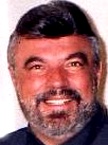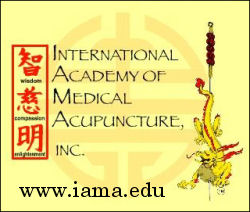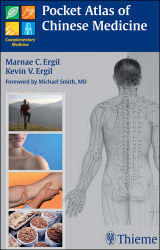Acupuncture & TCM Articles

Acupuncture Articles
by John A. Amaro L.Ac., Dipl.Ac.(NCCAOM), DC
 Dr. Amaro is an internationally known author, lecturer and practitioner beginning his practice of Acupuncture and Chiropractic in 1971. He has led 13 diplomatic Acupuncture study tours of The People's Republic of China escorting more than 500 doctors and practitioners. He has personally studied Acupuncture in nine separate Asian nations. Dr. Amaro is an internationally known author, lecturer and practitioner beginning his practice of Acupuncture and Chiropractic in 1971. He has led 13 diplomatic Acupuncture study tours of The People's Republic of China escorting more than 500 doctors and practitioners. He has personally studied Acupuncture in nine separate Asian nations.
He has received Certification in Acupuncture through the Columbia Institute of Chiropractic in 1973. This was one of the first Acupuncture postgraduate education programs for physicians in North America commencing in 1972.
He has been certified by the Waseda Acupuncture College in Tokyo, Japan in 1974 and graduated from the Chinese Medical Institute, Kowloon, China in 1976. He had previously taken postgraduate studies at the Tai Chung Medical School Taipei, China 1973.
CONTEMPORARY CHINESE MEDICINE (CCM)
OR
TRADITIONAL CHINESE MEDICINE (TCM)
John A. Amaro L.Ac., Dipl.Ac.(NCCAOM), DC
Having practiced and studied Traditional Chinese Medicine (TCM) for more than 25 years, I have had the incredible good fortune to visit the source of this incredible healing art 12 times on my visits to China. During those trips, it is usual to visit the most infamous Traditional Chinese Medicine Academy's and Institutes throughout the country.
Observing pulse diagnosis being conducted by a 30 year master of TCM is an experience in itself as this veteran will often spend up to 30 minutes with the patient just analyzing the pulse. I always find this so interesting that so many of our Western counterparts feel they can do as thorough of a job in less than one minute or even up to three minutes for that matter. Tongue diagnosis plays a major role in the TCM practitioners regime, I always wonder how our Western practitioners derive such incredible insight by glancing at the tongue for a few moments when the Chinese master spends a considerable length of time studying and analyzing.
To practice TCM by way of herbal or acupuncture application, it is imperative one know what conditions exists by proper analysis of numerous factors and to be able to pick the appropiate diagnosis from the Classical Syndromes, Disorders and Pathologies which exist. The following is a list of what the TCM practitioner must distinguish from.
CLASSICAL SYNDROMES
(FIRE ELEMENT)
1. DEFICIENCY OF THE HEART 5. STAGNATION OF HEART BLOOD
2. DEFICIENCY OF HEART YANG 6. HYPERACTIVITY OF HEART FIRE
3. DEFICIENCY OF HEART BLOOD 7. PHLEGM MISTING THE HEART
4. DEFICIENCY OF HEART YIN 8. PAIN DUE TO QI OF THE SI
(METAL ELEMENT)
1. INVASION OF LU BY PATHOGENIC WIND 5. INSUFFICIENCY OF LUNG YIN
2. RETENTION OF PHLEGM DAMP IN THE LU 6. DAMP HEAT IN THE LARGE INT.
3. RETENTION OF PHLELGM HEAT IN THE LU 7. CONSUMPTION OF FLUID IN LI
4. DEFICIENCY OF LUNG QI
(EARTH ELEMENT)
1. DEFICIENCY OF SPLEEN QI 6. RETENTION OF FOOD IN STOMACH
2. DYSFUNCTION OF SP IN CONTROLLING BLOOD 7. RETENTION OF FLUID DUE TO COLD
3. DEFICIENCY OF SPLEEN YANG 8. HYPERACTIVITY OF FIRE IN ST
4. INVASION OF SPLEEN BY COLD DAMP 9. INSUFFICIENCY OF STOMACH YIN
5. DAMP HEAT IN SPLEEN AND STOMACH
(WOOD ELEMENT)
1. STAGNATION OF LIVER QI 7. DEFICIENCY OF BLOOD STIRRING WIND
2. FLAMING OF LIVER FIRE 8. RETENTION OF COLD IN LIVER JING LUO
3. LIVER YANG RISING 9. INSUFFICIENCY OF LIVER BLOOD
4. STIRRING OF LIVER WIND IN THE INTERIOR 10. DAMP HEAT IN LIVER
5. LIVER YANG TURNING INTO WIND 11. DAMP HEAT IN GALLBLADDER
6. EXTREME HEAT STIRRING WIND
(WATER ELEMENT)
1. DEFICIENCY OF KIDNEY QI 3. INSUFFICIENCY OF KIDNEY YIN
2. INSUFFICIENCY OF KIDNEY YANG 4. DAMP HEAT IN THE BLADDER
(COMPLICATED SYNDROMES)
1. DISHARMONY BETWEEN THE HEART AND KIDNEY 6. DEFICIENCY OF QI OF LU & SP
2. DEFICIENCY OF QI OF THE LUNG AND KIDNEY 7. IMBALANCE BETWEEN LIVER & SPLEEN
3. DEFICINECY OF THE YIN OF LUNG AND KIDNEY 8. DISHARMONY BETWEEN LIVER AND ST
4. DEFICIENCY OF THE YIN OF THE LIVER AND KIDNEY 9. DEFICIENCY OF HEART AND SPLEEN
5. DEFICIENCY OF THE YANG OF THE SPLEEN AND KIDNEY 10. INVASION OF LUNG BY LIVER FIRE
(SYNDROMES OF SAN JIAO)
1. DAMP HEAT IN THE UPPER JIAO
2. DAMP HEAT IN THE MIDDLE JIAO
3. DAMP HEAT IN THE LOWER JIAO
EXTERNAL PATHOGENS (EXOGENOUS)
WIND DISORDERS: HEAT DISORDERS: FIRE DISORDERS: DAMP DISORDERS
1. Wind / Cold 1. Heat Deficiency 1. Empty Fire 1. Damp Heat
2. Wind / Cold & Damp 2. Heat & Dryness 2. Full Fire 2. Damp Cold
3. Wind / Cold restrict lung 3. Heat & Excess in up TH 3. Ministerial Fire 3. Damp / Heat in TH
4. Wind Constipation 4. Heat of the Five Centers 4. Ascending Fire 4. Damp / Heat in SP/ST
5. Wind Damp 5. Heat in the Heart 5. LU depressed Fire 5. Damp Phlegm
6. Wind Dizziness 6. Heat (pathogenic)
7. Wind Dryness 7. Heat restricts Lung COLD DISORDERS: External / Internal
8. Wind Phlegm headache 8. Heat (summer) 1. External Cold
9. Wind Heat 2. Cold Phlegm
10. Wind /Heat restrict lung DRY DISORDERS: 3. Cold Damp
11. Wind / Heat restrict kidney 4. Cold Damp injures SP
12. Wind / Phlegm (stroke) 5. Cold in the middle TH 6. Cold QI
QI PATHOLOGIES BLOOD DISORDERS PHLEGM DISORDERS
1. ASCENDING QI 1. BLOOD DEFICIENCY 1. PHLEGM COLD
2. DEFICIENCY OF QI 2. COLD & EMPTY 2. PHLEGM DAMP
3. BLOCKAGE OF QI 3. BLOOD HEAT 3. PHLEGM DIARRHEA
4. CONGEALED QI 4. BLOOD HOT 4. PHLEGM ASCENDS
5. OBSTRUCTED QI 5. BLOOD STAGNATION 5. PHLEGM HEAT
6. EMPTY QI 6. BLOOD OBSTRUCTED BY COLD 6. PHLEGM FIRE
7. REBELLIOUS LUNG QI 7. BLOOD MOVES INTENTLY 7. PHLEGM YELLOW & PROFUSE
8. DEPRESSED IN THE UPPER TH 8. PHLEGM TURBIDITY
9. PATHOGENIC QI 9. PHLEGM WIND
10. STAGNATION QI
11. TURBID QI
12. WEI FEN QI
13. YI QI (EVIL PATHOGENIC)
Pocket Atlas of
Chinese Medicine
 
It must be borne in mind, the ancient Chinese physician did not have an understanding of anatomy,physiology and diagnosis that we in contemporary times have. They were forced to rely heavily on the above thought processes which by and large are incredibly superior in perhaps most diagnosis compared to what the allopathic internist makes today. Those practitioners who are well versed in TCM can effectively treat disease processes with explanations which are totally foreign to our western thought process and in fact make little sense to one not versed in TCM. It truly is an entirely different profession.
However, just as we have Republicans and Democrats and Straights and Mixers , we also have Traditional Chinese Medicine (TCM) practitioners and Contemporary Chinese Medicine (CCM) practitioners. Don't be fooled into thinking that if you are not well versed in TCM, that you cannot be effective as an acupuncturist or Chinese herbalist. The bottom line, is the percentage of patients that respond favorably in the CCM or TCM practitioners office is literally the same.
Today, there are a number of classical TCM herbal formulas available to the non TCM practitioner which utilize Western diagnosis and thought process, to prescribe and achieve the same clinical response which would take years of study into the depths of Traditional Chinese Medicine. These herbal formulas take the Western trained doctor and now enables them to prescribe ancient formulas which until now have been totally restricted to the master herbalist and practitioner of TCM.
Contemporary Chinese Medicine (CCM) is a new descriptive term for those practitioners who practice acupuncture, Chinese herbal medicine, tui na (manipulation) and who are achieving outstanding clinical results without being immersed in the academics and time constraints of ancient TCM. These are contemporary times, we are contemporary doctors and most of all we are dealing with contemporary patients. Welcome to CONTEMPORARY CHINESE MEDICINE (CCM).
| 